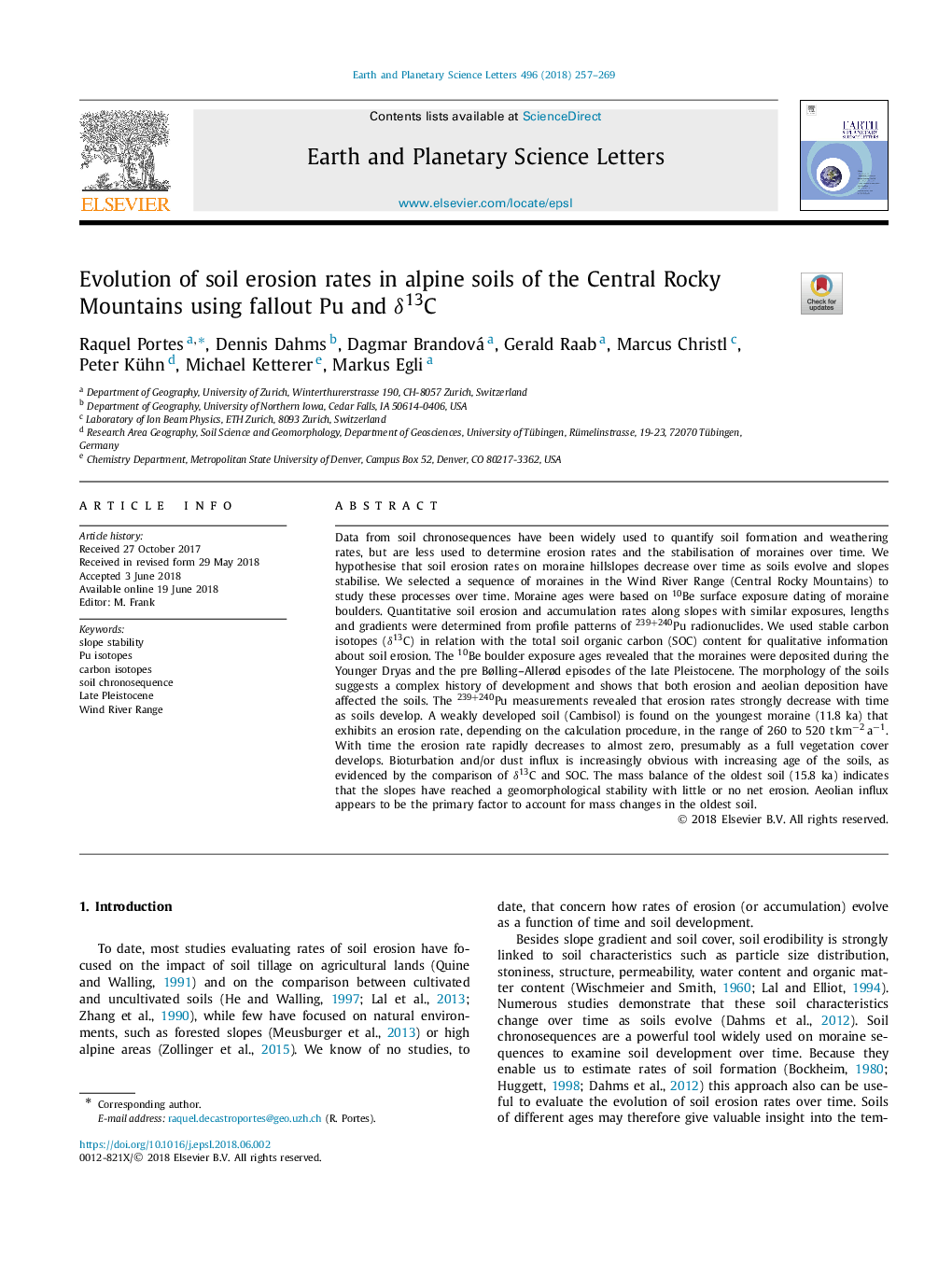| کد مقاله | کد نشریه | سال انتشار | مقاله انگلیسی | نسخه تمام متن |
|---|---|---|---|---|
| 8906789 | 1634660 | 2018 | 13 صفحه PDF | دانلود رایگان |
عنوان انگلیسی مقاله ISI
Evolution of soil erosion rates in alpine soils of the Central Rocky Mountains using fallout Pu and δ13C
دانلود مقاله + سفارش ترجمه
دانلود مقاله ISI انگلیسی
رایگان برای ایرانیان
کلمات کلیدی
موضوعات مرتبط
مهندسی و علوم پایه
علوم زمین و سیارات
علوم زمین و سیاره ای (عمومی)
پیش نمایش صفحه اول مقاله

چکیده انگلیسی
Data from soil chronosequences have been widely used to quantify soil formation and weathering rates, but are less used to determine erosion rates and the stabilisation of moraines over time. We hypothesise that soil erosion rates on moraine hillslopes decrease over time as soils evolve and slopes stabilise. We selected a sequence of moraines in the Wind River Range (Central Rocky Mountains) to study these processes over time. Moraine ages were based on 10Be surface exposure dating of moraine boulders. Quantitative soil erosion and accumulation rates along slopes with similar exposures, lengths and gradients were determined from profile patterns of 239+240Pu radionuclides. We used stable carbon isotopes (δ13C) in relation with the total soil organic carbon (SOC) content for qualitative information about soil erosion. The 10Be boulder exposure ages revealed that the moraines were deposited during the Younger Dryas and the pre Bølling-Allerød episodes of the late Pleistocene. The morphology of the soils suggests a complex history of development and shows that both erosion and aeolian deposition have affected the soils. The 239+240Pu measurements revealed that erosion rates strongly decrease with time as soils develop. A weakly developed soil (Cambisol) is found on the youngest moraine (11.8 ka) that exhibits an erosion rate, depending on the calculation procedure, in the range of 260 to 520 tâkmâ2âaâ1. With time the erosion rate rapidly decreases to almost zero, presumably as a full vegetation cover develops. Bioturbation and/or dust influx is increasingly obvious with increasing age of the soils, as evidenced by the comparison of δ13C and SOC. The mass balance of the oldest soil (15.8 ka) indicates that the slopes have reached a geomorphological stability with little or no net erosion. Aeolian influx appears to be the primary factor to account for mass changes in the oldest soil.
ناشر
Database: Elsevier - ScienceDirect (ساینس دایرکت)
Journal: Earth and Planetary Science Letters - Volume 496, 15 August 2018, Pages 257-269
Journal: Earth and Planetary Science Letters - Volume 496, 15 August 2018, Pages 257-269
نویسندگان
Raquel Portes, Dennis Dahms, Dagmar Brandová, Gerald Raab, Marcus Christl, Peter Kühn, Michael Ketterer, Markus Egli,